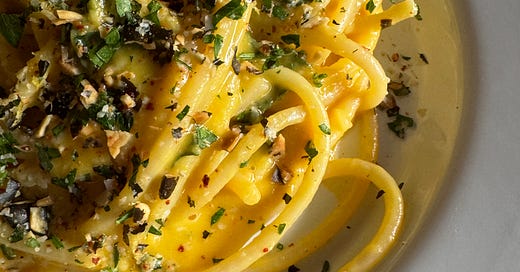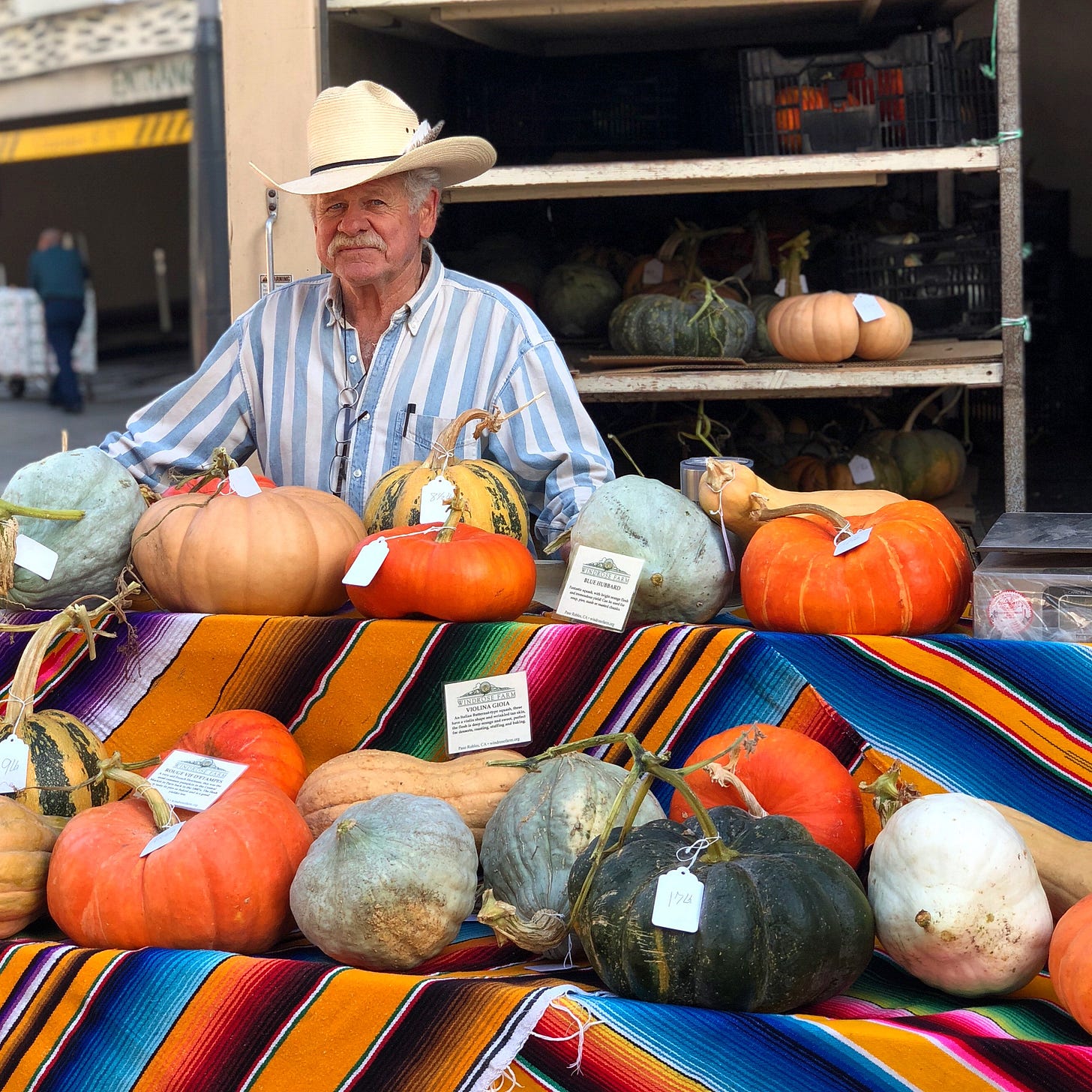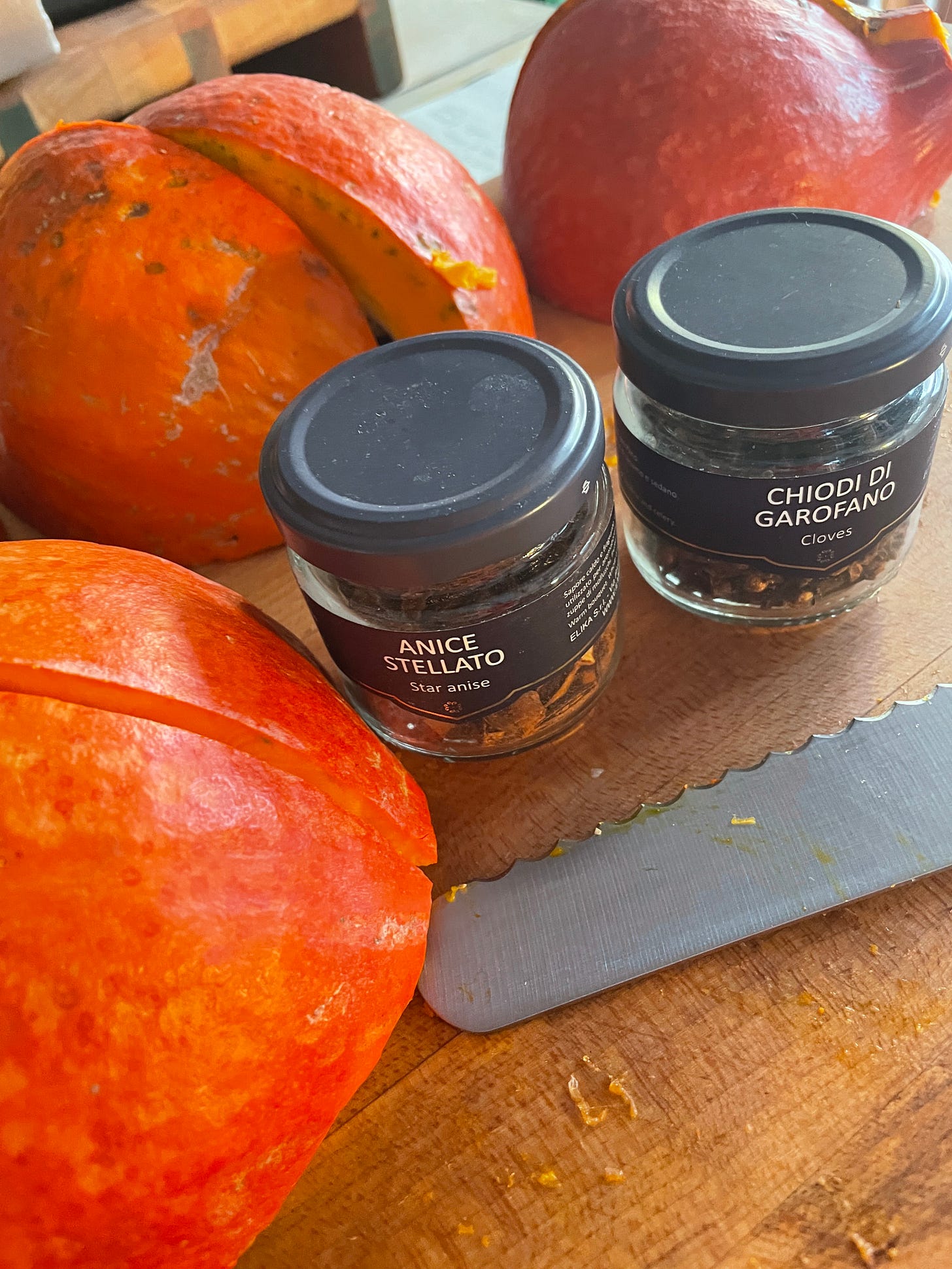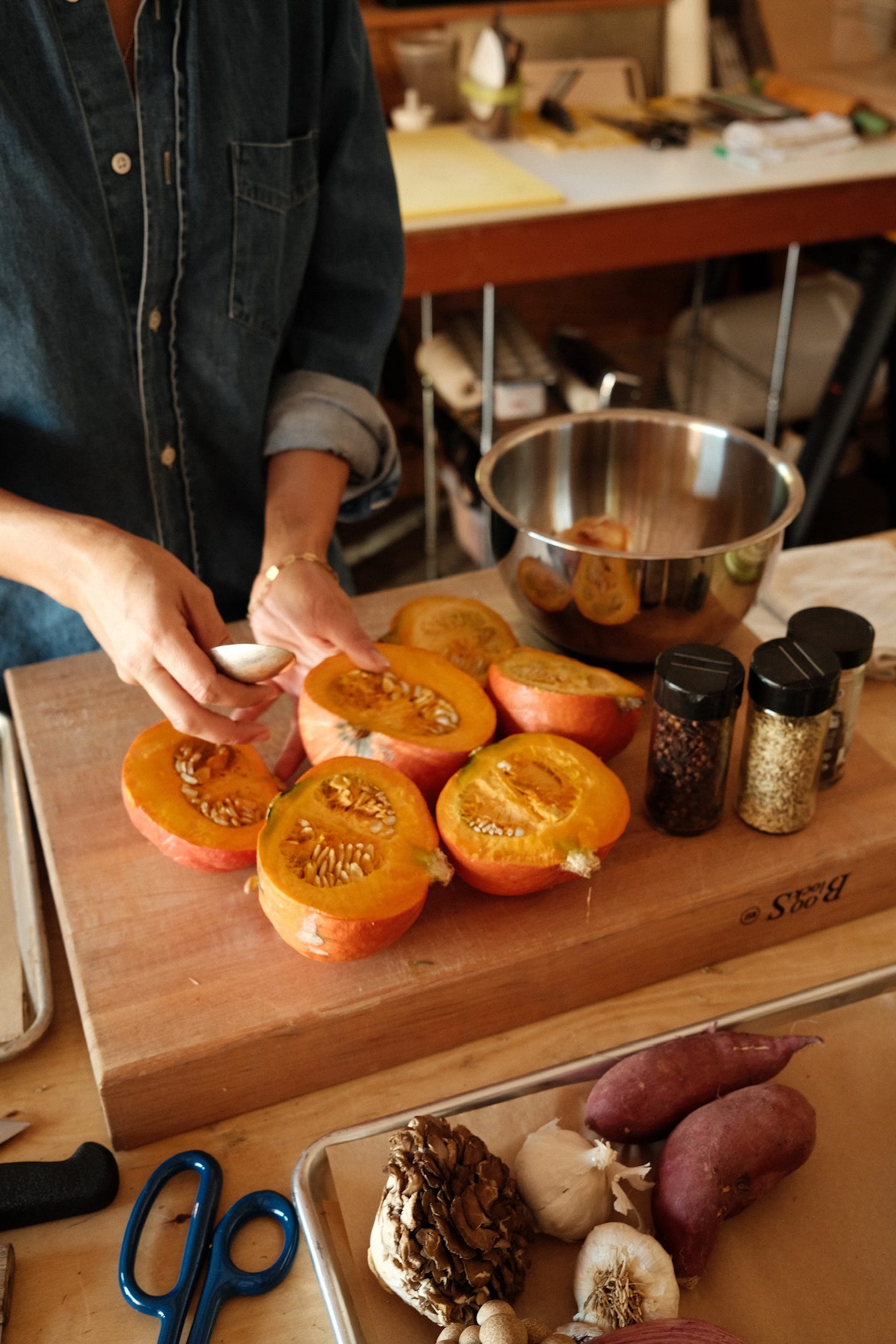I‘ve been so excited to share this recipe. It’s not just delicious; it’s a collection of culinary memories for me. It brings to mind the many different kinds of squash I roasted at Verjus that became filling for cappelletti, the many hours spent extruding fresh bucatini with precision while dusting them with fine semolina at Jon & Vinny’s in LA, and my fond recollections of munching on pumpkin seeds during my road trip from Chicago to San Jose when I first moved out West. This recipe ties all of those experiences together.
There’s an incredible variety of fall and winter squash—there is more varieties being introduced as we speak. I always remind myself that when it comes to food and cooking, I’m learning something new every day. I certainly don’t have all the answers, and I rely heavily on cookbooks, Substack, Google, and, most importantly, the very wise food community around me for knowledge, tips, and tricks. Embracing that journey of discovery is part of what makes cooking so enriching. For all things veggie knowledge and advice, I have to give a shoutout to Samantha Rogers and Max Dornbush. If you’re looking to learn all things farmers market and seasonal produce, follow Sam’s weekly post at Sam Loves the Market.
My cream of the crop winter squash is the Marina di Chioggia, aptly named after a fishing port in Venice, Italy. It’s so delicious, and if you can find it, I highly recommend trying it. Here in Southern California, we’re quite spoiled, but I’ve spotted them in various other states as well. If you find them hang on to them, they develop flavor as they age (or cure as Sam says). Save it for a rainy day when you have the curiosity to give them a try. In the mean time they are so beautiful as decoration. Stay tuned, I am working on a gnocchi recipe with them as we speak :).
For this particular recipe, I lean toward a denser pumpkin, like red kuri squash or orange kabocha. They’re beautiful, as shown in the picture above. Red kuri squash is a delightful blend of green kabocha and curry squash, offering the best of both worlds with a chestnut flavor and tender, edible skin. As you’ll see in the video, I use a bread knife, which works best for me! Remember, cooking is a sport, and not every tool is a one-size-fits-all. A longer bread knife allows me to leverage my way through the pumpkin. Just a friendly reminder: take your time when cutting squash. It can be tricky, so proceed with caution and never cut on a wet surface.
Once you slice through the squash, scoop out the seeds. The “belly button” area is a fantastic spot to infuse flavor. In this recipe, I used dried Calabrian chiles for some heat and half a head of garlic for each side of the squash. By placing these in the core and covering the squash to steam, it absorbs all those delicious flavors. Get creative! This is your chance to experiment with what you have at home. For a bolder, earthier flavor, consider adding cloves, star anise, cinnamon, bay leaves, ginger, juniper berries—the possibilities are endless.
Cover the squash snugly with aluminum foil—this step is crucial. To achieve proper steaming, you need to ensure that the edges of the foil tightly hug the vessel you're using. If the seal isn’t secure, you’ll lose valuable time and risk roasting the squash, which can lead to dryness instead of that tender, steamed perfection.
In the video, you’ll notice the intense steam that escapes when I remove the foil—this can also present a safety hazard. As we know, cooking can be dangerous, so please be careful. For those of us who like to live on the edge, be sure to take a step back and use a towel when you go to release the edges of the foil and let out that steaming hot air. Safety first, even when multi-tasking from one thing to the next. If I’m making a soup or puree, I typically scoop the meat of the squash while it’s still hot and blend it right away. In the video, you can see me using a towel to hold the pumpkin steady while I scoop out the flesh (because hot). You can also blend with a vitamix or blender if that is what you have available.
As the squash cooks, it’s the perfect time to gather the other ingredients for blending. For this pasta sauce, I added the squash to a mixture of onion and garlic slowly cooked for about 30 minutes and opted for an immersion blender—it’s a game changer for minimizing dishes. Immersion blenders are incredibly versatile; I use them constantly for soups and sauces. For a top-shelf option, I recommend the Bamix, and for something budget-friendly, try this one (not an ad, btw). Both do the job beautifully and there are so many different kinds that work just fine. The key is to ensure there's enough liquid to create a velvety smooth sauce. I added crème fraîche and a touch of maple syrup for that lovely caramel sweetness. Remember when we make a pasta sauce we also add pasta water–ALWAYS! So don’t make your sauce too thin. It’s a dance this cooking thing.
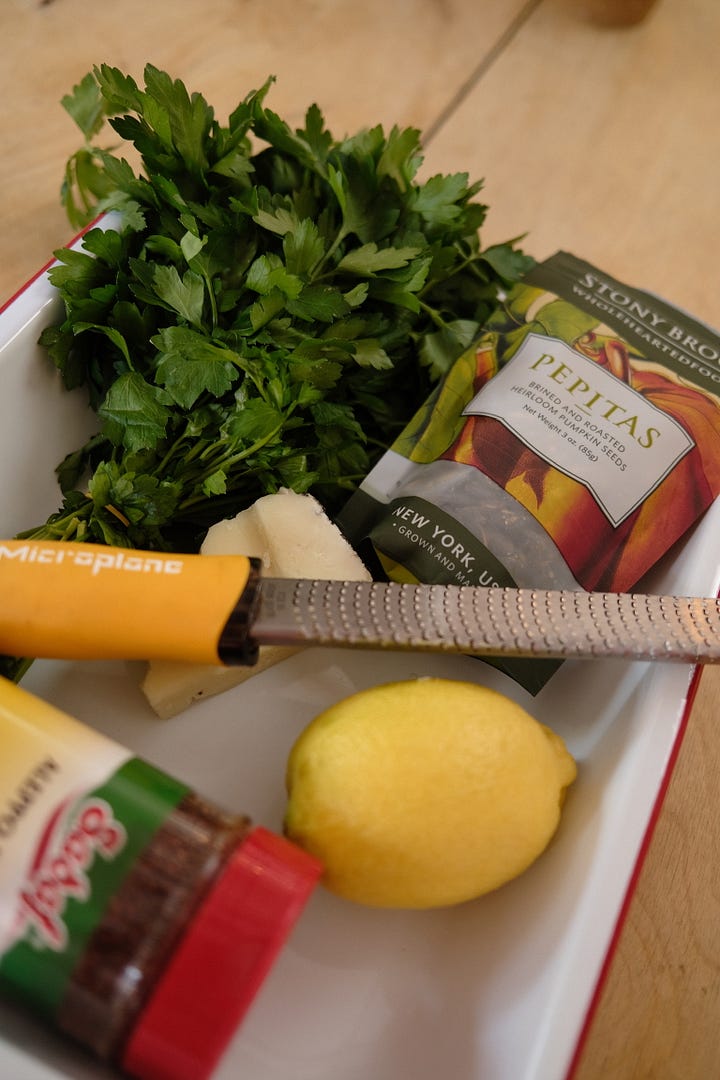
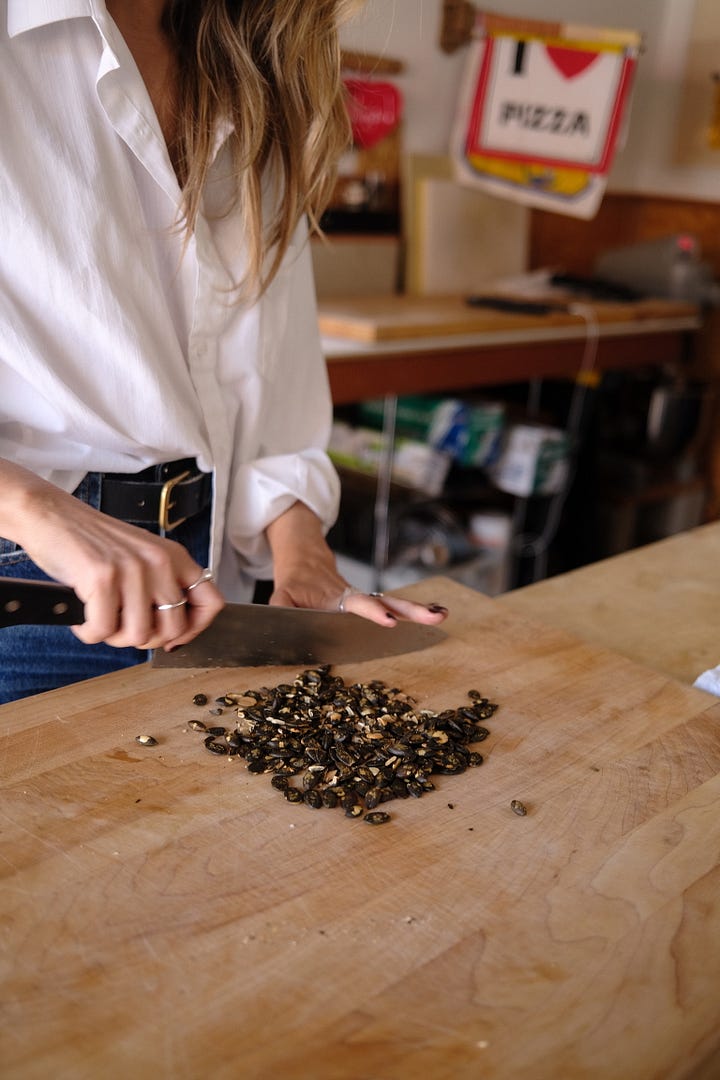
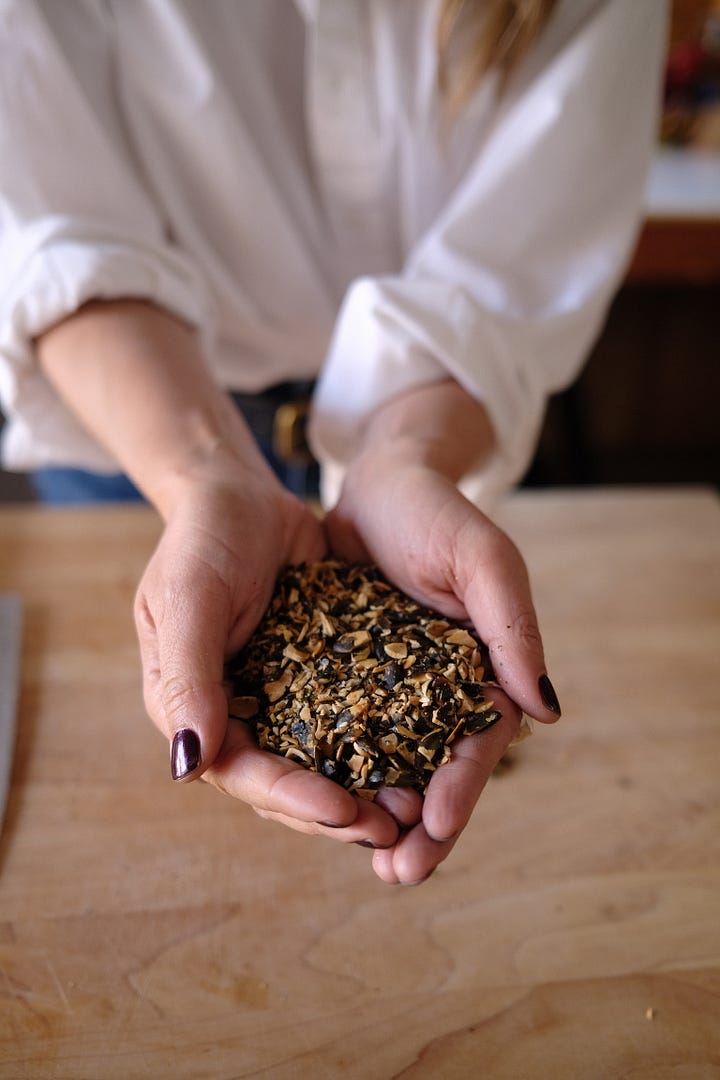
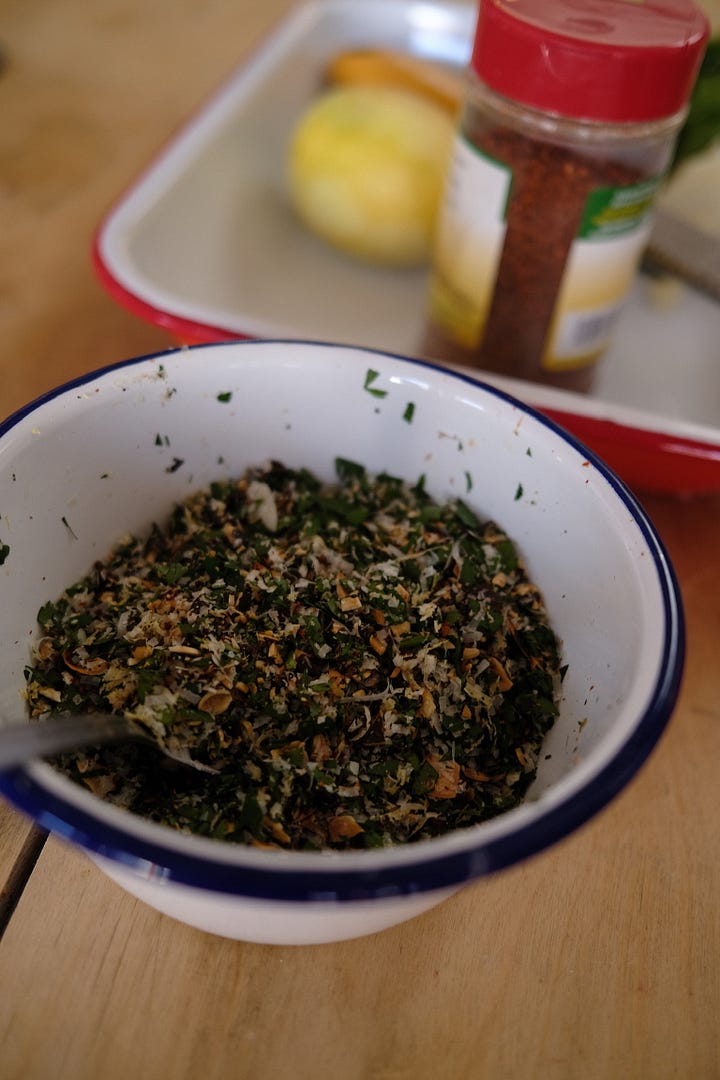
As a quick note, If I were making a pasta filling, my method would differ slightly. I absolutely LOVE using squash for ravioli filling—it packs intense flavor and keeps a creamy texture. When I prepare a filling, I cool the pumpkin overnight and blend it the following day–more on this in a future post.
Now let’s dig to the details. Step by step guideline and recipe for the bucatini and the pepita crumble below!

